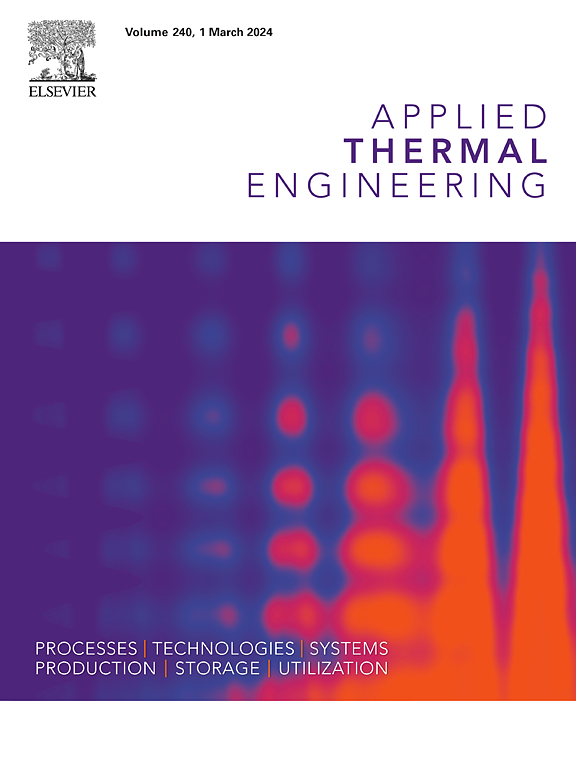Maximizing energy output in PVT systems with triangular-finned solar air collectors
IF 6.9
2区 工程技术
Q2 ENERGY & FUELS
引用次数: 0
Abstract
Photovoltaic-thermal (PVT) systems face efficiency limitations due to inadequate heat dissipation from PV panels. This work provides the first systematic analysis of triangular fins in PVT air collectors, demonstrating their unique advantages over conventional designs. A 3D CFD model (ANSYS Fluent 2025) analyzed two configurations: a reference model (simple collector) and a modified model (triangular fins) under varying airflow rates (Re = 3000–21000) and solar intensities (200–1000 W/m2). Results show the modified model achieves 17.37 % higher thermal efficiency at Re = 9000, with 11.3 % greater thermal power output at Re = 3000, while maintaining identical electrical efficiency (∼13.66 %). The fins’ impact diminishes at high Re (21000), where forced convection dominates. This work demonstrates that triangular fins optimize heat transfer in PVT systems, offering a practical solution for energy output enhancement. The novelty lies in the systematic evaluation of triangular fins geometric advantages over conventional designs, validated against prior experimental data.
带三角翅片太阳能空气收集器的PVT系统的能量输出最大化
由于光伏板散热不足,光伏热(PVT)系统面临效率限制。这项工作提供了PVT空气收集器中三角鳍的第一个系统分析,展示了它们比传统设计的独特优势。三维CFD模型(ANSYS Fluent 2025)分析了不同气流率(Re = 3000-21000)和太阳强度(200-1000 W/m2)下的参考模型(简单集热器)和改进模型(三角翅片)两种配置。结果表明,改进后的模型在Re = 9000时的热效率提高了17.37%,在Re = 3000时的热功率输出提高了11.3%,同时保持相同的电效率(~ 13.66%)。在高Re(21000)时,翅片的冲击减弱,在那里强迫对流占主导地位。这项工作表明,三角形翅片优化了PVT系统的传热,为增强能量输出提供了实用的解决方案。新颖之处在于系统地评估了三角形鳍相对于传统设计的几何优势,并根据先前的实验数据进行了验证。
本文章由计算机程序翻译,如有差异,请以英文原文为准。
求助全文
约1分钟内获得全文
求助全文
来源期刊

Applied Thermal Engineering
工程技术-工程:机械
CiteScore
11.30
自引率
15.60%
发文量
1474
审稿时长
57 days
期刊介绍:
Applied Thermal Engineering disseminates novel research related to the design, development and demonstration of components, devices, equipment, technologies and systems involving thermal processes for the production, storage, utilization and conservation of energy, with a focus on engineering application.
The journal publishes high-quality and high-impact Original Research Articles, Review Articles, Short Communications and Letters to the Editor on cutting-edge innovations in research, and recent advances or issues of interest to the thermal engineering community.
 求助内容:
求助内容: 应助结果提醒方式:
应助结果提醒方式:


